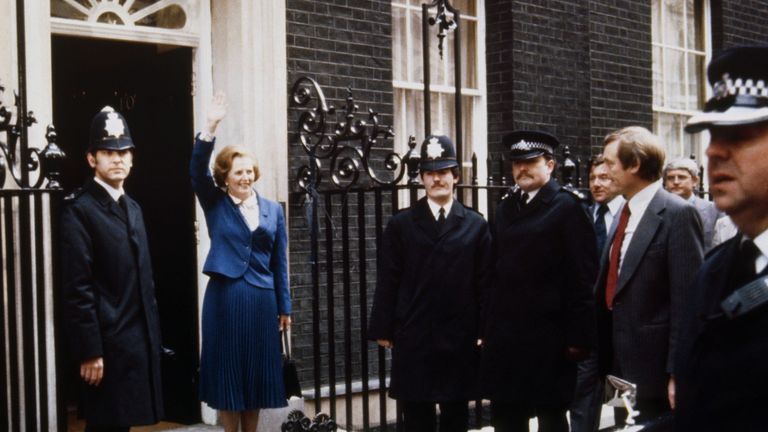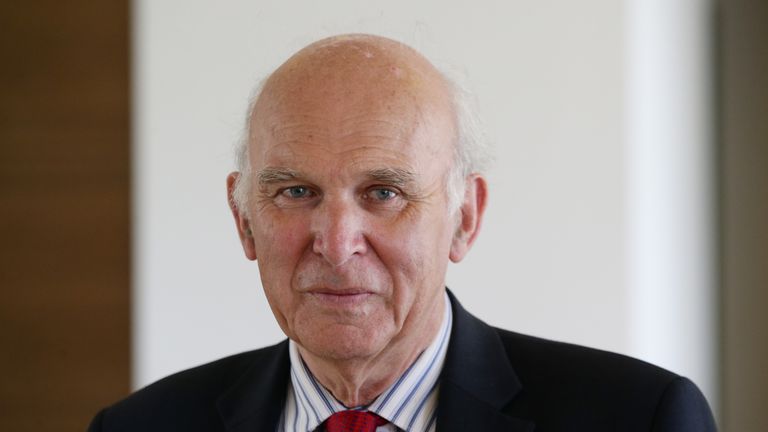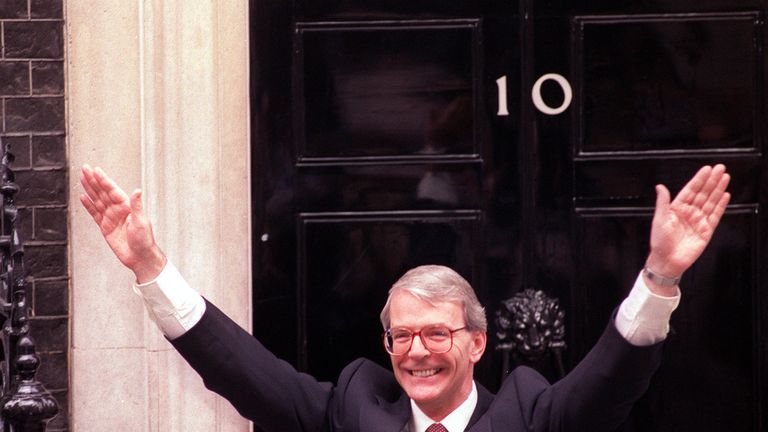Thatcher-style landslide 'a big ask' for Theresa May at General Election
Achieving the landmark result of 1979 while in government would secure the current Conservative leader's name in the record books.
Friday 26 May 2017 20:04, UK
Two days before the Conservative campaign wobble over what the manifesto does and does not say about social care Theresa May stated: "If I lose just six seats I will lose this election."
Maybe she was anticipatingMaybe the party's private polling was already indicating her lead was shrinking.
And maybe, neither of these things.
Politicians set the bar ridiculously low but for the time being let's stay with Mrs May's caution.
::
Strictly speaking, the Government's majority is twelve after the 2015 votes were counted.
Every net seat loss this time reduces it by two. By that token six seats are the correct benchmark.
But if that is the outcome that's more than a 'loss' in my book.
Having engineered the election for tactical gain, to lose her government's majority would be disastrous.
Some Conservative defences may be breached.
In Twickenham, the majority, after despatching Vince Cable two years ago, is just 2,000.
His efforts to be re-elected are assisted by the Green party's withdrawal, reflecting its support for a progressive alliance.
::
Richmond Park, gained by the Liberal Democrats at a recent by-election when the Greens controversially withdrew its candidate, is another.
Here, Zac Goldsmith is hoping to let bygones be bygones as he re-badges as a Conservative.
Add to these other former Lib Dem seats like Bath, where most voters preferred Remain over Leave, it is no leap of the imagination to identify Conservative incumbents vulnerable to a Liberal Democrat revival.
Elsewhere, Conservatives need to worry about Labour rivals boosted by strategic switching.
In Morley and Outwood, where voters in 2015 were unknowingly launching Ed Balls into a showbiz career, there are now just three candidates, half the number that stood two years ago.
More than a fifth of voters can either switch or abstain this time.
::
Another former Labour MP, Chris Williamson, is striving to recover Derby North from the Conservatives after being edged out by just 41 votes. The Greens, again absent, received four times that number in 2015.
Brighton Kemptown might also provide an unpleasant surprise for the Conservatives with the Greens totally focussed on retaining neighbouring Pavilion.
So, it is possible to find a handful of seats where the Conservatives could lose.
But this is an absurdly pessimistic view of the situation that prompted this election.
If a net loss of seats for the Conservatives is disastrous then how high should we set the benchmark? Post-war elections should be our guide.
Certainly, it must be higher than the current majority otherwise why rush to June 2017 instead of waiting for the scheduled election in 2020.
John Major won a majority of 21 in his surprise victory of 1992.
This time a tiny swing of half of 1% from Labour returns Wirral West and four other seats to the Conservatives and takes them to a 22-seat majority. How small is that swing? It would be a post-war record low.
Mr Major's government was easily derailed so May needs a bigger majority for the tricky Brexit negotiations.
Assuming a straight swing from Labour of just 2.5% brings a further 19 gains and a majority of 50 seats in the next House of Commons.
Given the possibility of by-election defeats and contentious Commons' votes as the negotiations over Europe gather pace this is probably the bare minimum.
The Conservatives while openly declaring victory will think different thoughts in private.
A more comfortable majority in the region of 80, larger than the Cameron/Clegg coalition, means a swing of around 4%, which brought Margaret Thatcher a landslide in 1983.
Keep an eye out for Blackpool South on election night.
Despite Mrs May's sombre warning though, expectations have already been raised about her own landslide of 100 seats plus. Labour majorities of 5,000 need removing for this scenario.
This is a big ask by any standards in the post-war era.
Margaret Thatcher secured a 5.3% swing in 1979, but she was in opposition and Jim Callaghan's government was spent.
Achieving that feat whilst in government would secure Theresa May's name in the record books.






